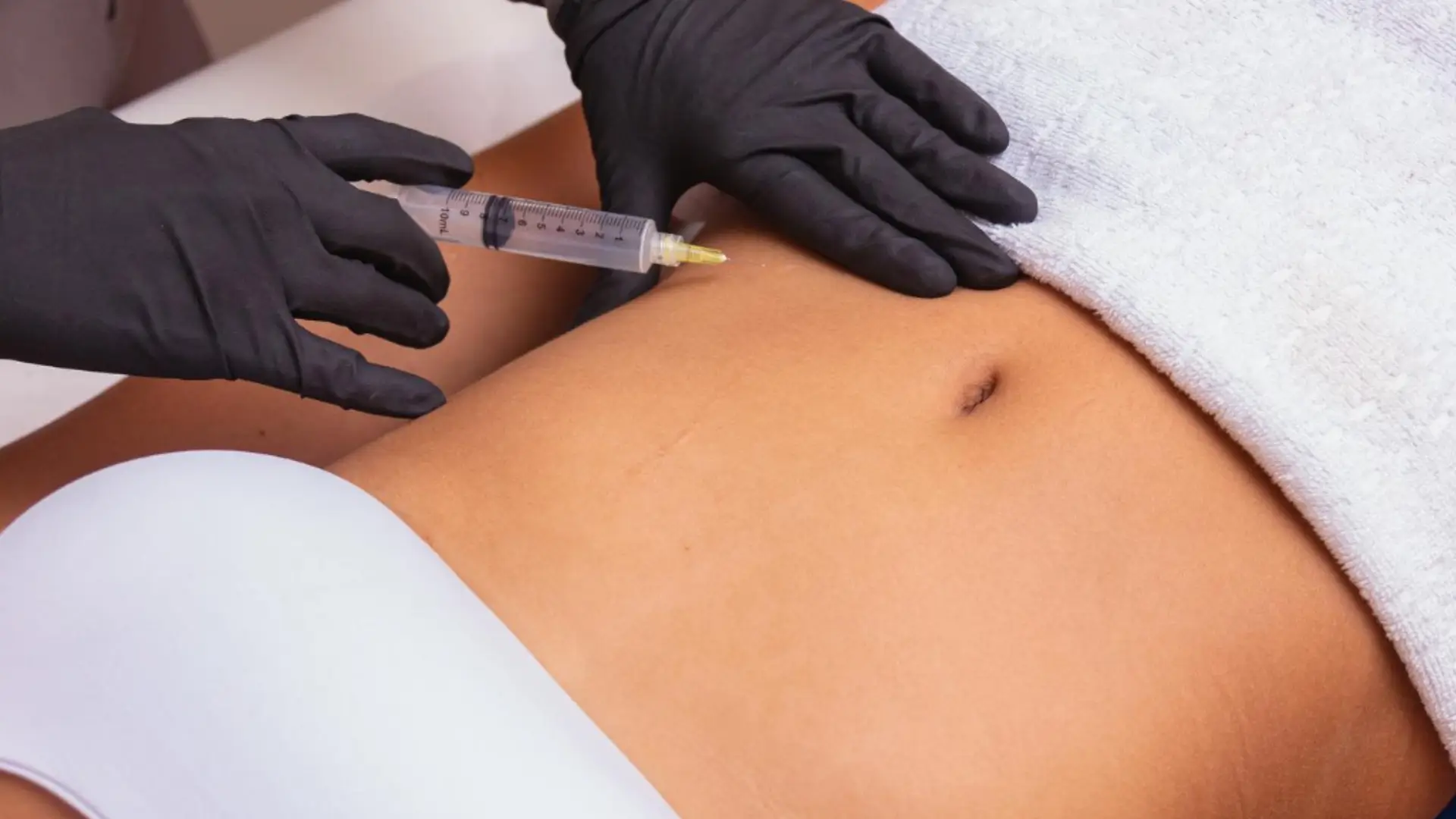Pregnancy can bring about many surprises, including the challenge of managing allergic conditions like asthma and rhinitis. When not well controlled, these conditions can pose risks to both the mother and the baby.
As biologic therapies like omalizumab (Xolair) become more commonly used for severe allergic diseases, the question of Xolair’s safety during pregnancy is increasingly important. While some registry data offers reassurance, the evidence is still limited and requires careful consideration.
In this article, we will explore what’s currently known about Xolair and pregnancy, discuss its safety profile, review relevant guideline recommendations, and offer practical advice for clinicians and patients to navigate this complex issue.
Key Takeaways
- Xolair (omalizumab) can treat severe allergic conditions, including asthma, chronic spontaneous urticaria, food allergies, and chronic rhinosinusitis with nasal polyps.
- Pregnancy exposure registry data for Xolair show no clear link to major birth defects, but infants of mothers using Xolair had slightly lower birth weights. More research is needed to fully understand the fetal implications.
- Xolair crosses the placenta via the neonatal Fc receptor (FcRn), and while animal studies show no adverse effects on fetal growth, human data is limited.
- Healthcare providers should carefully weigh maternal health against fetal risks when considering Xolair use during pregnancy and ensure ongoing monitoring.
- For breastfeeding mothers, they should expect Xolair to be present in human milk at low levels. Close monitoring of the infant is recommended if the therapy continues during lactation.
- Multidisciplinary management is essential for pregnant woman, with collaboration between obstetrics, allergy/immunology, and primary care providers to ensure safe and effective treatment.
About: Medica Depot is your trusted all-in-one supplier, offering a range of high-quality medical injectables and supplies. If you’re looking to buy Xolair, contact Medica Depot’s sales representatives and they will guide you on how to do so. Whether for health professionals, plastic surgeons, dermatologists, licensed estheticians, or other specialists, we can offer genuine, brand-name products you may need. With Medica Depot, we prioritize serving you better to improve the patient’s quality of life.
Current Safety Data And Registry Outcomes For Xolair Exposure During Pregnancy

Pregnancy complicates care for many people with allergic asthma and other allergy-related conditions. The Xolair manufacturer continually updates the prescribing information with the latest post-marketing data to ensure that healthcare providers have the most current information available.
For clinicians advising asthma patients who are pregnant or planning pregnancy, the available evidence — led by the prospective EXPECT pregnancy registry—informs counseling about omalizumab pregnancy exposure and pregnancy outcomes.
The data includes a pregnancy exposure registry that tracks outcomes for Xolair-treated patients from eight weeks before conception through pregnancy. While this data provides some reassurance, there is currently no clear pattern of birth defects to omalizumab exposure.
However, registry results showed that infants born to women who used Xolair during pregnancy had lower birth weight compared to those in other cohorts. It’s worth noting that women taking Xolair during pregnancy also experienced more severe asthma, which may have contributed to the lower birth weight.
Key outcomes from the registry, compared to control groups, include:
- In EXPECT, pregnancy outcomes showed a high live birth rate (≈99.1%), similar to comparators. The prevalence of major congenital anomalies (~8.1%) closely matched the comparator cohort (~8.9%). Clinicians should note these absolute figures when counseling asthma patients.
- EXPECT identified differences in neonatal measures (for example, some reductions in birth weight and a higher preterm birth proportion). Investigators and regulators interpret these signals cautiously because Xolair-treated patients often had more severe disease and additional risk factors that affect pregnancy outcomes, independent of omalizumab pregnancy exposure.
Understanding Omalizumab’s Placental Transfer And Potential Fetal Implications

Omalizumab is an anti-IgE IgG monoclonal antibody that crosses the placenta via the neonatal Fc receptor (FcRn). Preclinical studies in cynomolgus monkeys showed no evidence of maternal toxicity, embryotoxicity, or teratogenicity. However, experts observed neonatal thrombocytopenia in primates at doses exceeding those used clinically. Notably, this has not been observed in human clinical practice, providing some reassurance, although Xolair and pregnancy still require ongoing research to understand potential implications.
Xolair’s prescribing information emphasizes that practitioners should only use omalizumab in pregnancy if the benefits to the mother outweigh any potential fetal risks. Healthcare providers should weigh these factors carefully and refer to the pregnancy registry data when counseling patients. It’s also essential for clinicians to document the treatment rationale and, when available, encourage patients to enroll in the pregnancy exposure registry.
Recommendations For Continuing Or Initiating Xolair During Pregnancy And Lactation

When deciding whether to start or continue Xolair therapy during pregnancy, healthcare providers must carefully assess the severity of the mother’s condition against potential risks to the fetus. If practitioners initiated the therapy, it’s important to:
- Clearly document the clinical indication and rationale for asthma treatment or other therapy in the medical record.
- Encourage patients to enroll in the pregnancy exposure registry, allowing clinicians to track evolving data to guide future care.
- Monitor patients regularly to prioritize both maternal health and fetal safety.
Counseling And Monitoring For Lactation
Animal studies in cynomolgus monkeys have shown that neonatal plasma levels after in utero exposure and 28 days of nursing ranged from about 11% to 94% of maternal plasma levels. However, milk concentrations were approximately 0.15% of maternal serum concentration, much lower than previously stated.
While there is limited data on Xolair in human milk, expect omalizumab to some degree. The potential for oral absorption in infants, or for any clinical harm, remains unclear. The prescribing label strongly advises caution when prescribing Xolair to nursing women and recommends monitoring the infant closely if therapy continues.
Multidisciplinary Management And Shared Decision-Making In Allergic Disease During Pregnancy
Managing allergic diseases or reactions during pregnancy requires a multidisciplinary approach. Healthcare providers should collaborate with obstetrics, allergy/immunology, primary care, and other specialists to ensure the safety and well-being of both the mother and fetus.
Key steps in this approach include:
- Reviewing disease severity, medication risks, and pregnancy timing to develop a personalized treatment plan.
- Ensuring maternal disease control while minimizing fetal exposure to unnecessary medications.
- Educating patients on the benefits of treating uncontrolled allergic diseases in pregnancy, summarizing Xolair safety data, and discussing injection logistics and anaphylaxis precautions related to Xolair administration.
Conclusion
Understanding the use of Xolair (omalizumab) during pregnancy is vital in managing allergic diseases effectively. While current registry data shows no clear connection between Xolair and birth defects, the treatment still needs further research for experts to properly assess its potential effects on the fetus.
Healthcare providers must adopt a personalized approach, balancing maternal health with possible risks to the fetus, while ensuring ongoing monitoring and educating patients about their treatment options. Enrolling in the pregnancy exposure registry will help provide critical data to guide future treatment decisions.
FAQs
1. Is Xolair (omalizumab) safe to use during pregnancy?
Current registry data does not show a clear link between Xolair and birth defects, but this concern requires further research. Healthcare providers should assess the risks and benefits on a case-by-case basis.
2. What should healthcare providers consider when prescribing Xolair to pregnant women?
Healthcare professionals should evaluate the severity of the mother’s allergic condition against potential risks to the fetus and document their rationale for treatment decisions.
3. Can Xolair affect breastfeeding?
Limited data exists on Xolair in human milk, but research suggests its presence. Providers should exercise caution and monitor the infant closely if the mother continues Xolair during breastfeeding.
References
Pali-Schöll I, Namazy J, Jensen-Jarolim E. Allergic diseases and asthma in pregnancy, a secondary publication. World Allergy Organization Journal. Published online 2017. doi:https://doi.org/10.1186/s40413-017-0141-8
Genentech, Inc. XOLAIR® Omalizumab | For Subcutaneous Use. accessdata.fda.gov. Accessed November 6, 2025. https://www.accessdata.fda.gov/drugsatfda_docs/label/2007/103976s5102lbl.pdf









